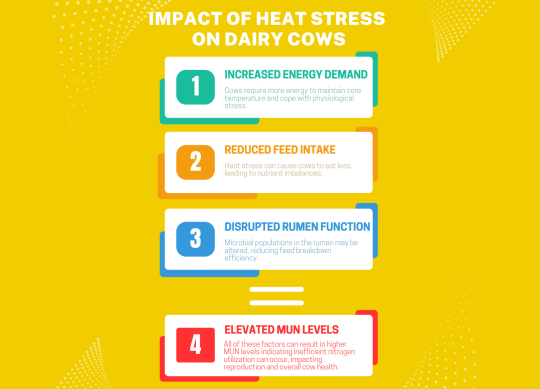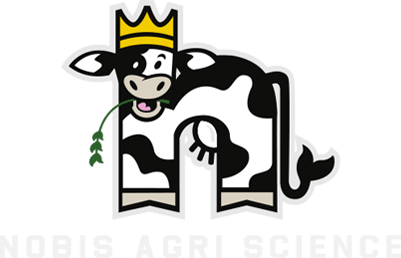Understanding the Impact of Heat Stress on Dairy Cows
As temperatures rise during the summer months, heat stress becomes a critical concern for dairy producers. Not only does it affect cow comfort, but it can also lead to significant decline in productivity, reproductive performance and overall herd health. Understanding the impacts of heat stress is essential to implementing effective management strategies.
Increased Energy Demand
When cows are exposed to high temperatures, they expend more energy trying to regulate their body temperature through increased respiration rate. This added energy demand diverts resources away from milk production potentially reducing milk yield and compromising immune function.
Reduced Feed Intake
One of the first signs of heat stress is a reduction in feed intake. Cows eat less to minimize the metabolic heat produced during digestion, but this reduction leads to nutrient deficiencies that can negatively affect milk components and overall performance.
Disrupted Rumen Function
The rumen is the engine of the dairy cow’s digestive system, and its function can be significantly altered by heat stress. Changes in feeding patters and reduced feed intake can shift rumen pH, affecting microbial populations responsible for breaking down fiber and other nutrients. This can result in reduced feed efficiency and increased risk of digestive upsets like subacute ruminal acidosis (SARA).
Elevated Milk Urea Nitrogen (MUN) Levels
All of these stressors can culminate in elevated Milk Urea Nitrogen (MUN) levels. High MUN indicates that protein is not being utilized efficiently, which can stem form an imbalance between energy and protein intake caused by reduced feed consumption. Inefficient nitrogen utilization is not only an economic concern, but can also impair reproductive performance, leading to longer calving intervals and lower conception rates.
By recognizing the signs of heat stress early and adopting strategies to help keep cows cool, producers can mitigate these negative impacts and support their cows’ health and productivity during the hottest months of the year.
Written By: Terry Nobis, Nobis Agri Science Nutrition and Management Consultant



